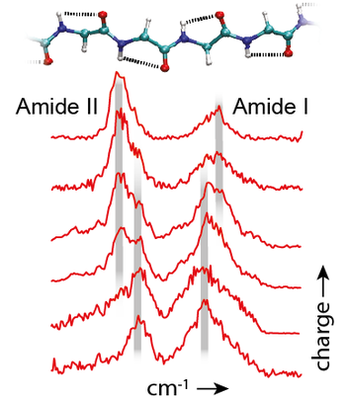New Publication in JASMS
News from Dec 05, 2016
From Compact to String—The Role of Secondary and Tertiary Structure in Charge-Induced Unzipping of Gas-Phase Proteins
In the gas phase, protein ions can adopt a broad range of structures, which have been investigated extensively in the past using ion mobility-mass spectrometry (IM-MS)-based methods. Compact ions with low number of charges undergo a Coulomb-driven transition to partially folded species when the charge increases, and finally form extended structures with presumably little or no defined structure when the charge state is high. However, with respect to the secondary structure, IM-MS methods are essentially blind. Infrared (IR) spectroscopy, on the other hand, is sensitive to such structural details and there is increasing evidence that helices as well as β-sheet-like structures can exist in the gas phase, especially for ions in low charge states. Very recently, we showed that also the fully extended form of highly charged protein ions can adopt a distinct type of secondary structure that features a characteristic C5-type hydrogen bond pattern. Here we use a combination of IM-MS and IR spectroscopy to further investigate the influence of the initial, native conformation on the formation of these structures. Our results indicate that when intramolecular Coulomb-repulsion is large enough to overcome the stabilization energies of the genuine secondary structure, all proteins, regardless of their sequence or native conformation, form C5-type hydrogen bond structures. Furthermore, our results suggest that in highly charged proteins the positioning of charges along the sequence is only marginally influenced by the basicity of individual residues.
go to the article: DOI 10.1007/s13361-016-1551-5





